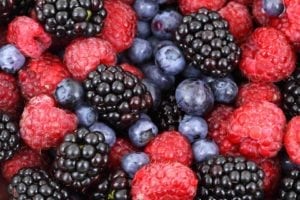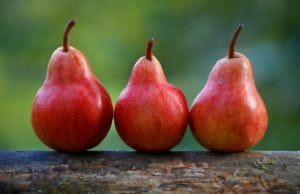The advantages of fruits
Fruits refresh and sate. They slim down, soothe the nerves, cleanse and taste great. See what fruits contain!
The most vitamins have apples, plums, pears, raspberries. Although no one needs to be convinced about it, there are those who still reach for it rarely. Mistake! Treats from orchards are after all a multivitamin pill available throughout the year. It strengthens the body and relieves many ailments.
Colorful menu
Nutritionists encourage every day to eat fruit, a large apple, orange, a glass of raspberries and a small bunch of grapes.
- You can add them to breakfast. It’s better than a morning espresso. They provide a solid dose of energy for the day. They contain a lot of fructose and glucose, which are great fuel for the body.
- Keep them on hand at work when you feel hungry. Such a snack will help you concentrate, relieve stress and tension.
- Give it for dessert. Fruit delicacies are a great substitute for sweets and stimulate appetite. Serve them to omelets.
- Eat before going to bed. Prepare, for example, a cocktail without sugar, which will calm you down and make it easier to fall asleep.
Do not give up on them, even when you take care of the line. Try to choose the juicy and less sweet. They’re full, not fattening. They accelerate the metabolism.
RASPBERRIES

Image Credit: PublicDomainPictures
Vitamins: C, B1, B2, B6, PP and beta-carotene. Minerals: iron, potassium and zinc. Fiber, essential oils, as well as salicylic acid. A glass of raspberries (3.5274 oz) is 31 k cal.
How do it work?
Raspberries are an effective diaphoretic, antipyretic, antibacterial and antitussive drug. They act diuretic and relieve symptoms of rheumatism. They improve the appetite. They regulate digestion, accelerate bowel movements, and act laxative.
For whom?
Good for those who care about the line and children with reduced immunity. Warning! May cause sensitization.
Watermelon seeds are a rich source of many vitamins and minerals. Did you know about it?
GRAPES
Vitamins C, B1, B2, beta-carotene. Mineral elements: calcium, magnesium, iron, manganese and iodine. Flavonoids, tartaric acid, apple and lemon. A glass of grapes (3.5274 oz) is 70 k cal.
How do it work?
The grapes support the heart and blood vessels. They regulate blood pressure, have diuretic properties. They strengthen the nervous system, improve memory and concentration. They also increase the body’s immunity, have antibacterial and antiviral properties.
For whom?
Recommended hypertonic patients. Warning! Eaten with the peel can cause bloating and stomach aches.
PLUM

Image Credit: Daria-Yakovleva
Vitamins: C and P , from group B and beta-carotene. Minerals: phosphorus, potassium and bar. Pectin, malic and citric acid. 5 large plums (3.5274 oz) provide 66 k cal.
How do it work?
Plums facilitate slimming, because they regulate digestion and prevent constipation. They strengthen the heart by lowering the level of bad cholesterol. They also improve blood circulation and regulate blood pressure. They support the nervous system, acting calming and cheering.
For whom?
It is worth giving them to patients with kidney stones and rheumatism. Warning! In excess, they act reliably.
APPLE
Vitamins: C and P, from group B and beta-carotene. Minerals: phosphorus, potassium and bar. Pectin, sugars, malic and citric acid. The average apple (3.5274 oz) is 47 k cal.
How do it work?
Apples detoxify the body, help remove toxins and heavy metals from the body. They support slimming, because they give a feeling of satiety. They protect the heart and vessels, reducing the level of bad cholesterol and increasing good cholesterol. Strengthen teeth, hair and nails.
For whom?
Indicated for smoking cigarettes and residents of large cities. Warning! Apples can be allergic.
BANANAS

Image credit: Security
Vitamins: A, B6 and folic acid as well as vitamins C, E and PP. Minerals: iron, magnesium, potassium, manganese, iodine, cobalt and selenium. Starch and serotonin. The average banana (7.055 oz) is 142 k cal.
How do it work?
Bananas strengthen the body, they are a rich source of sugars needed for brain work. They calm down, restore good mood, improve memory and concentration. They provide energy for muscle work. They detoxify the body and improve the condition of the skin.
For whom?
Perfect as a snack for students. Warning! They are quite caloric, promote overweight.
PEARS

Image credit: 27707
Vitamins from the group B. Minerals – potassium. Citric and malic acid, tannins (tannins in the skin) and essential oils in the flesh. The average pear (3.5274 oz) is 47 cal.
How do it work?
Pears support digestion, stimulate the secretion of bile. Soft ripe fruits prevent constipation. Tired and less juicy fruits treat diarrhea. They strengthen the nervous system, perfectly affect the well-being, improve memory and concentration.
For whom?
For students, people living in constant tension and stress. Warning! They can exacerbate complaints with ulcers.
